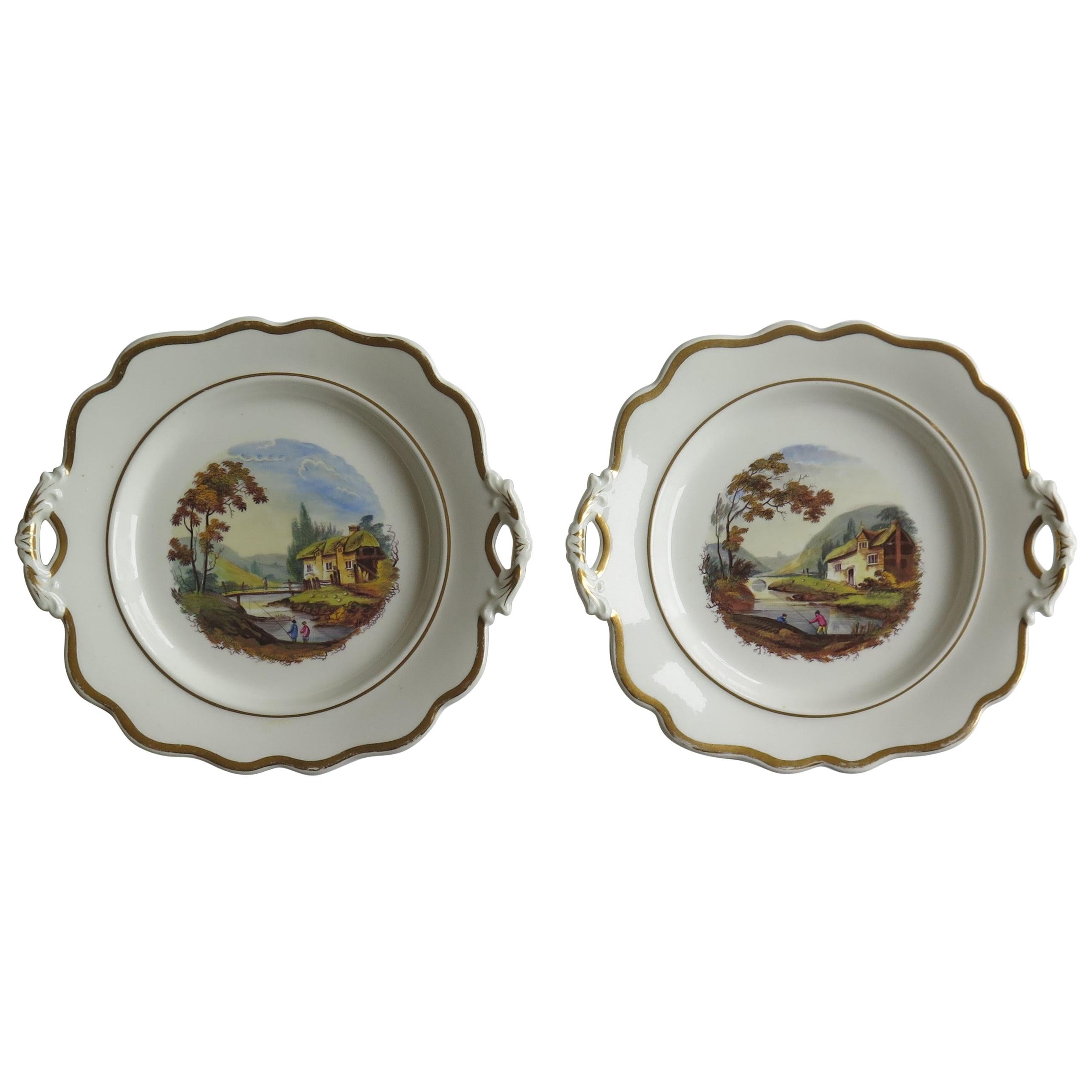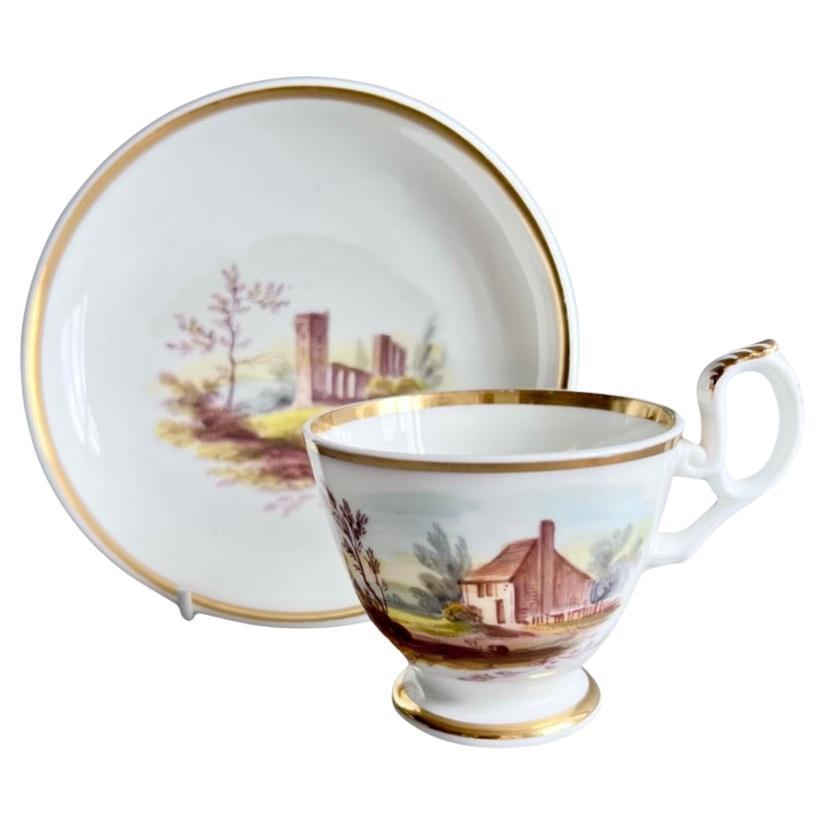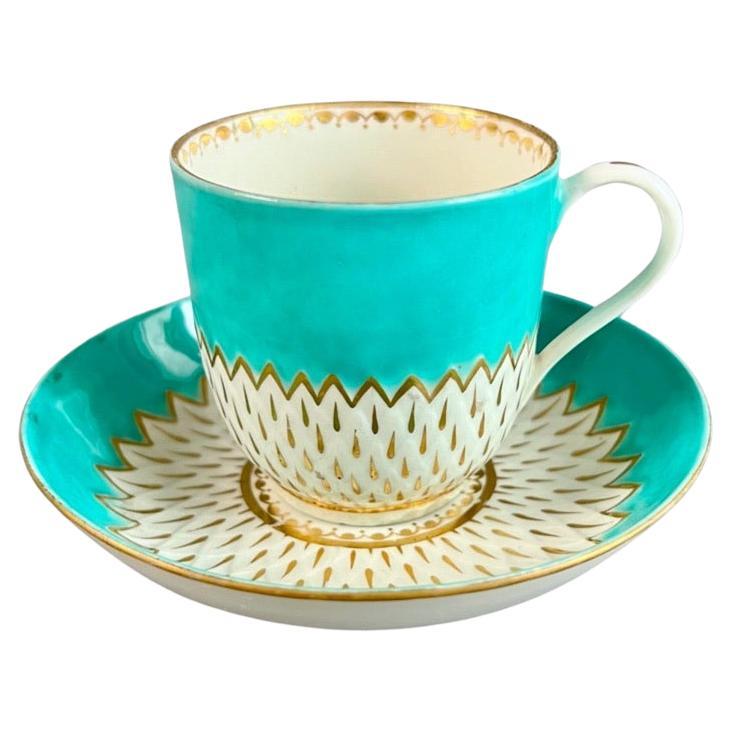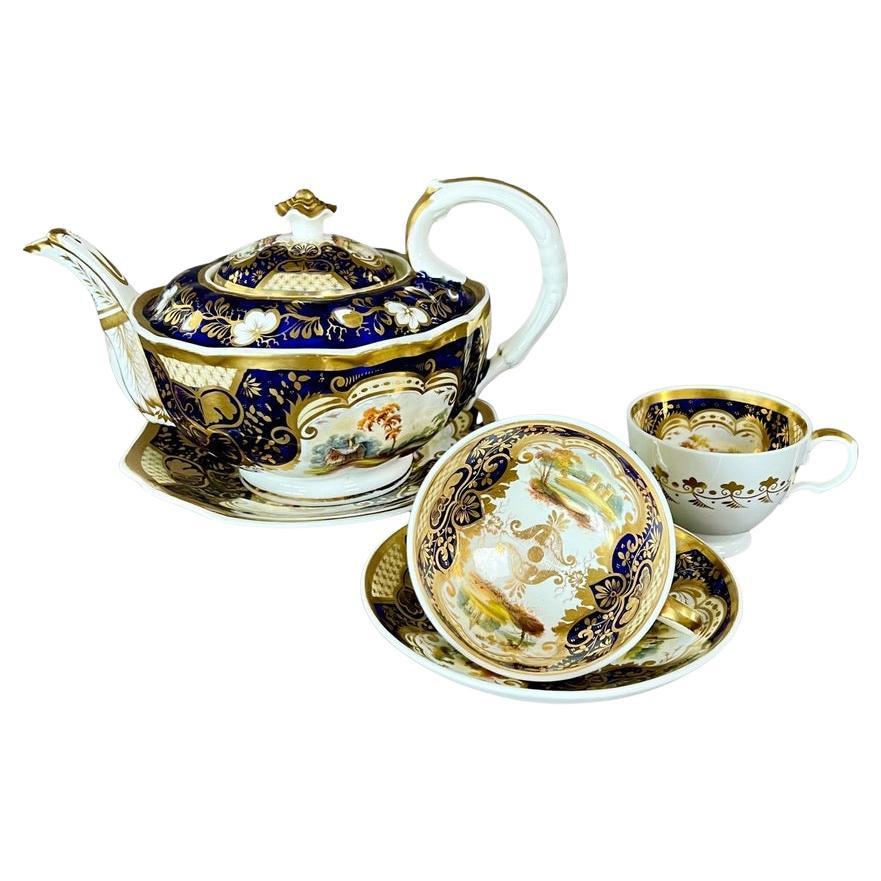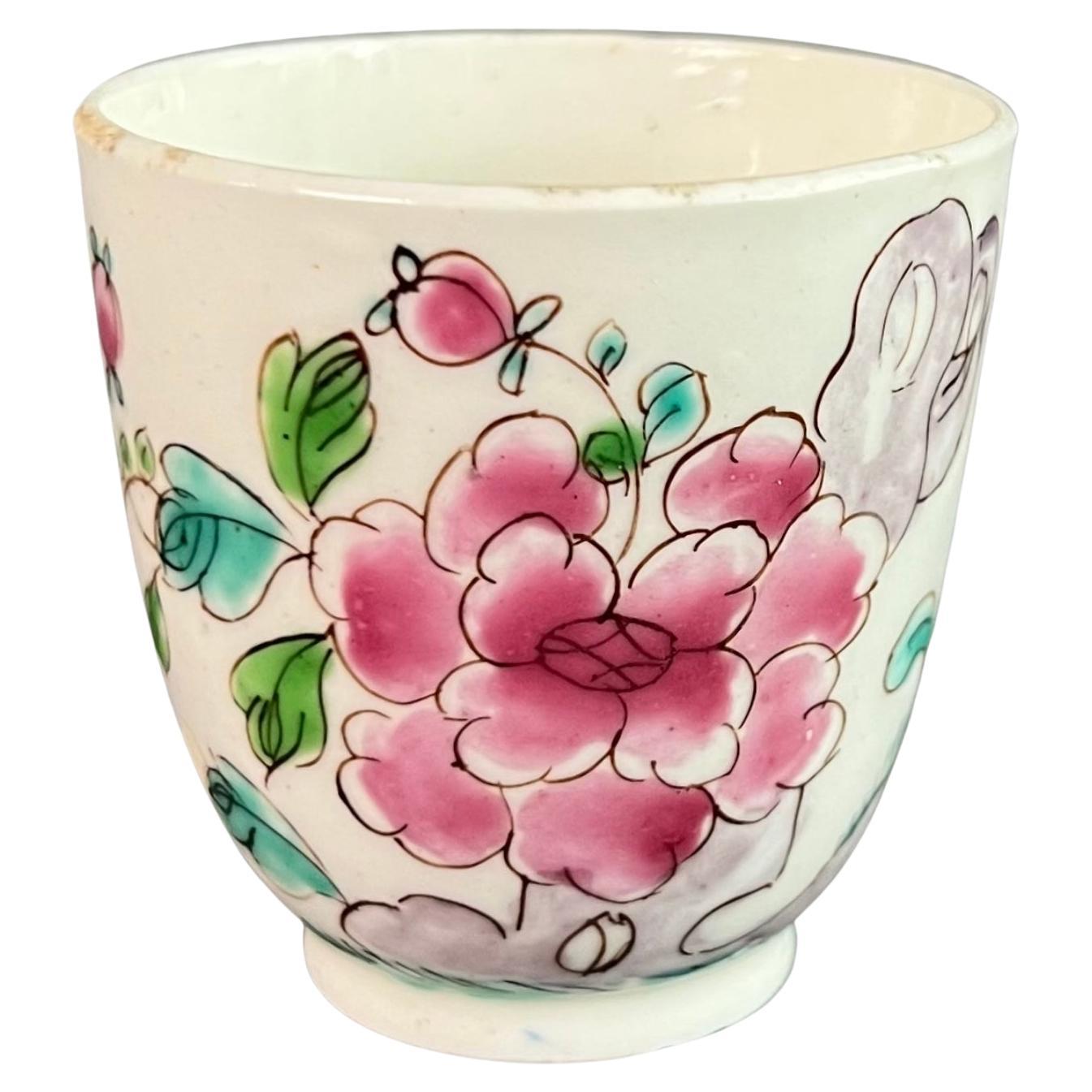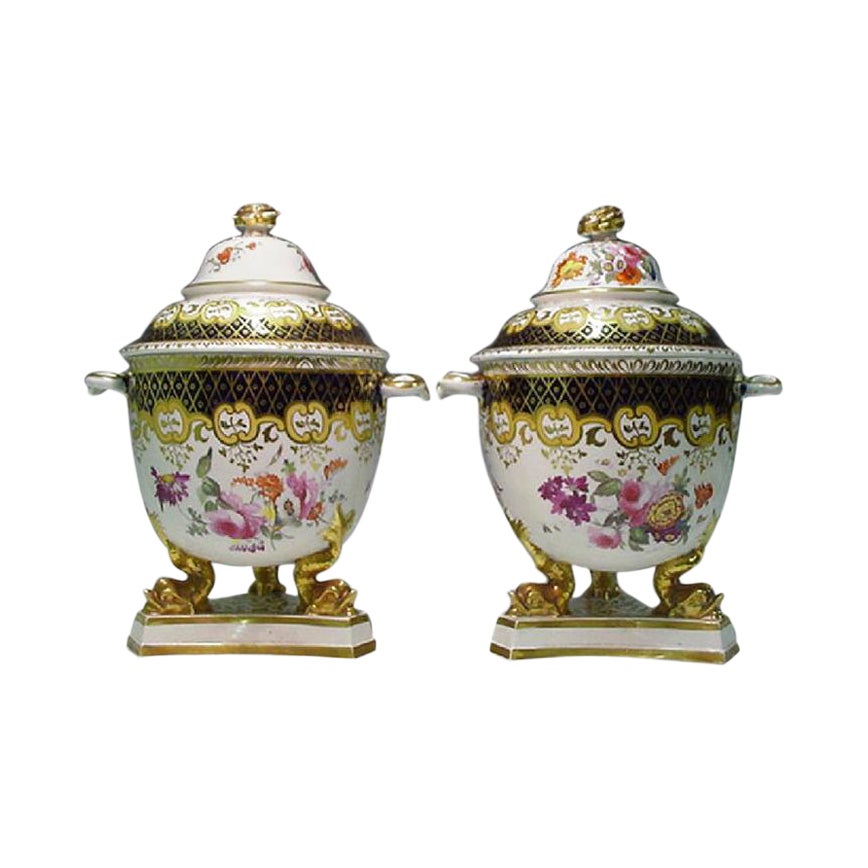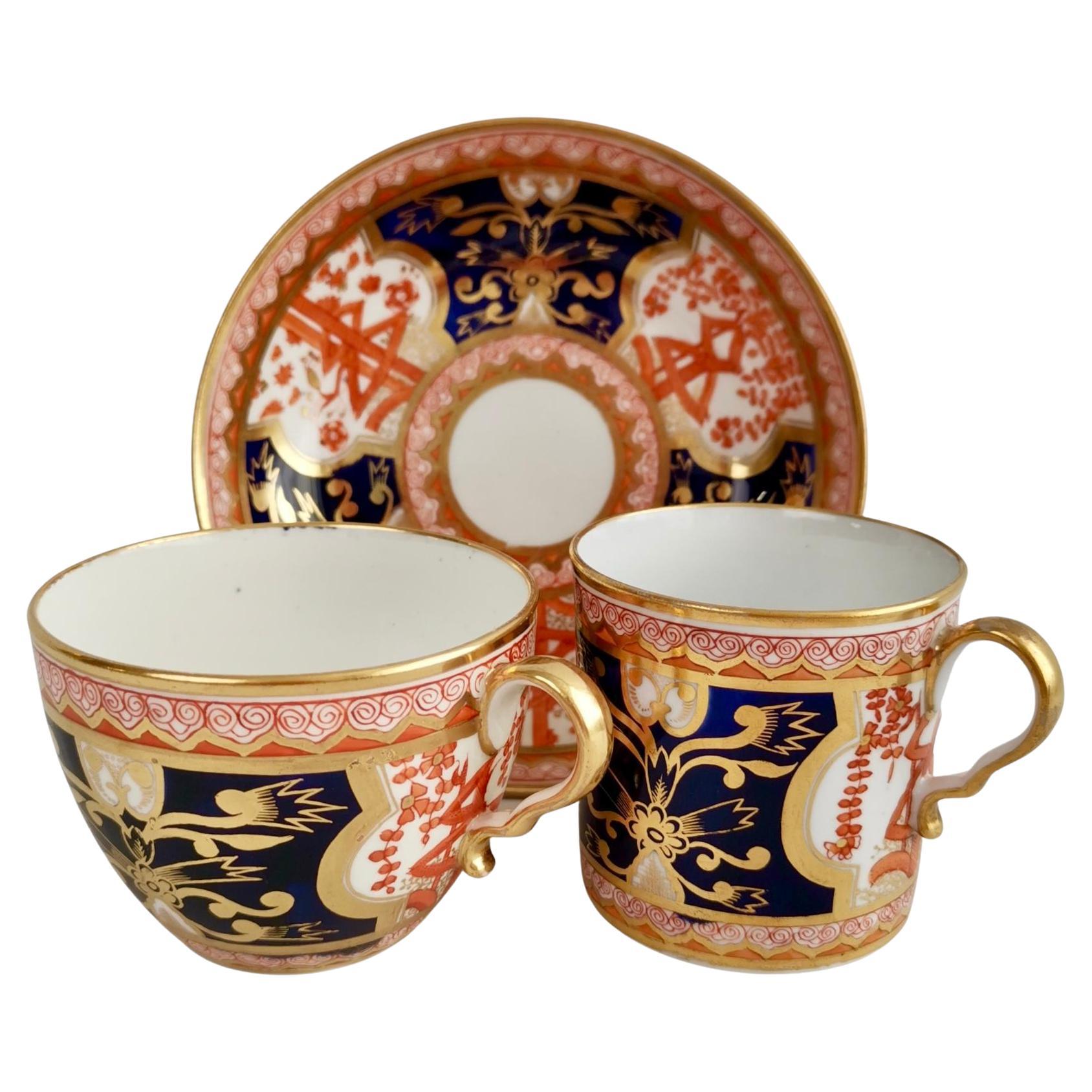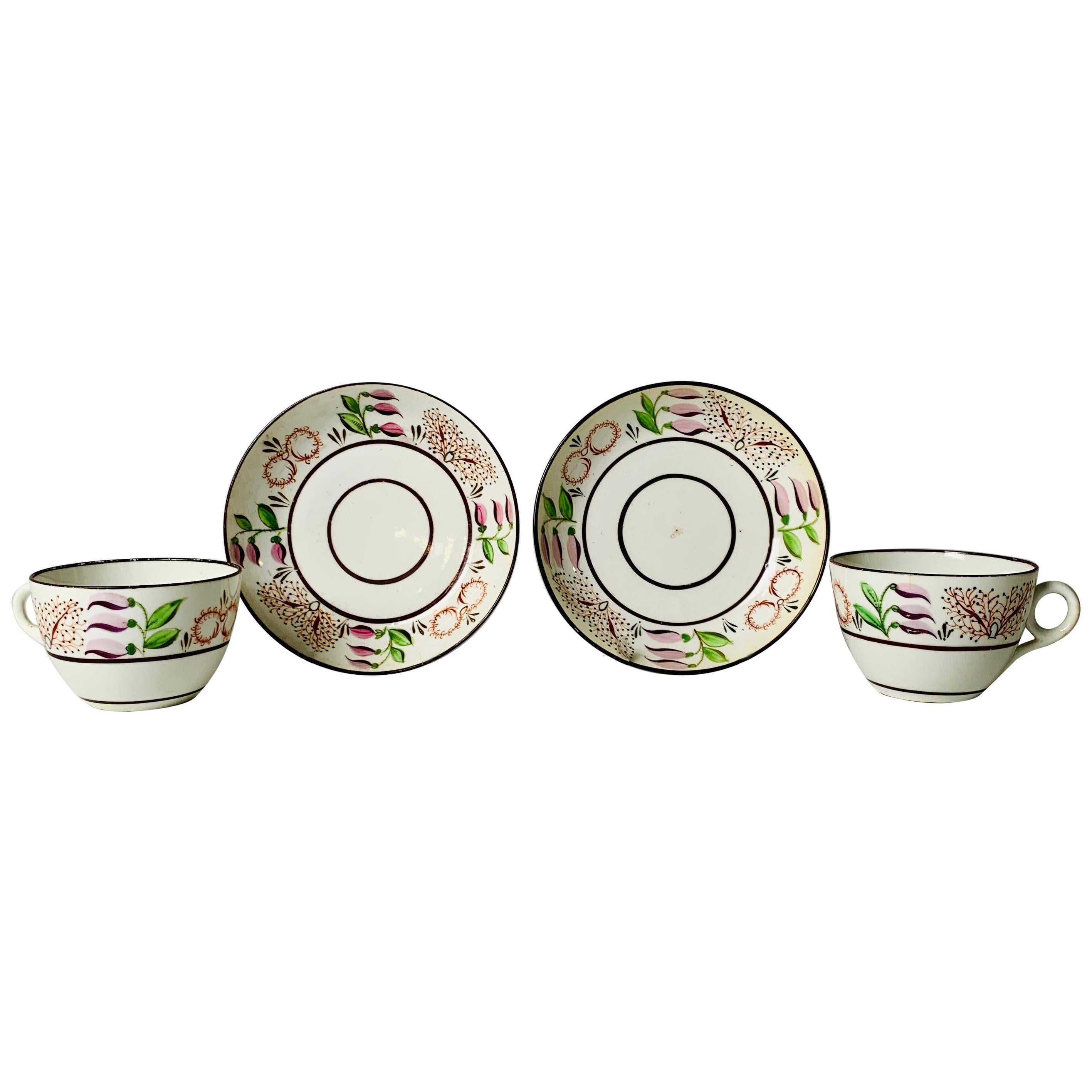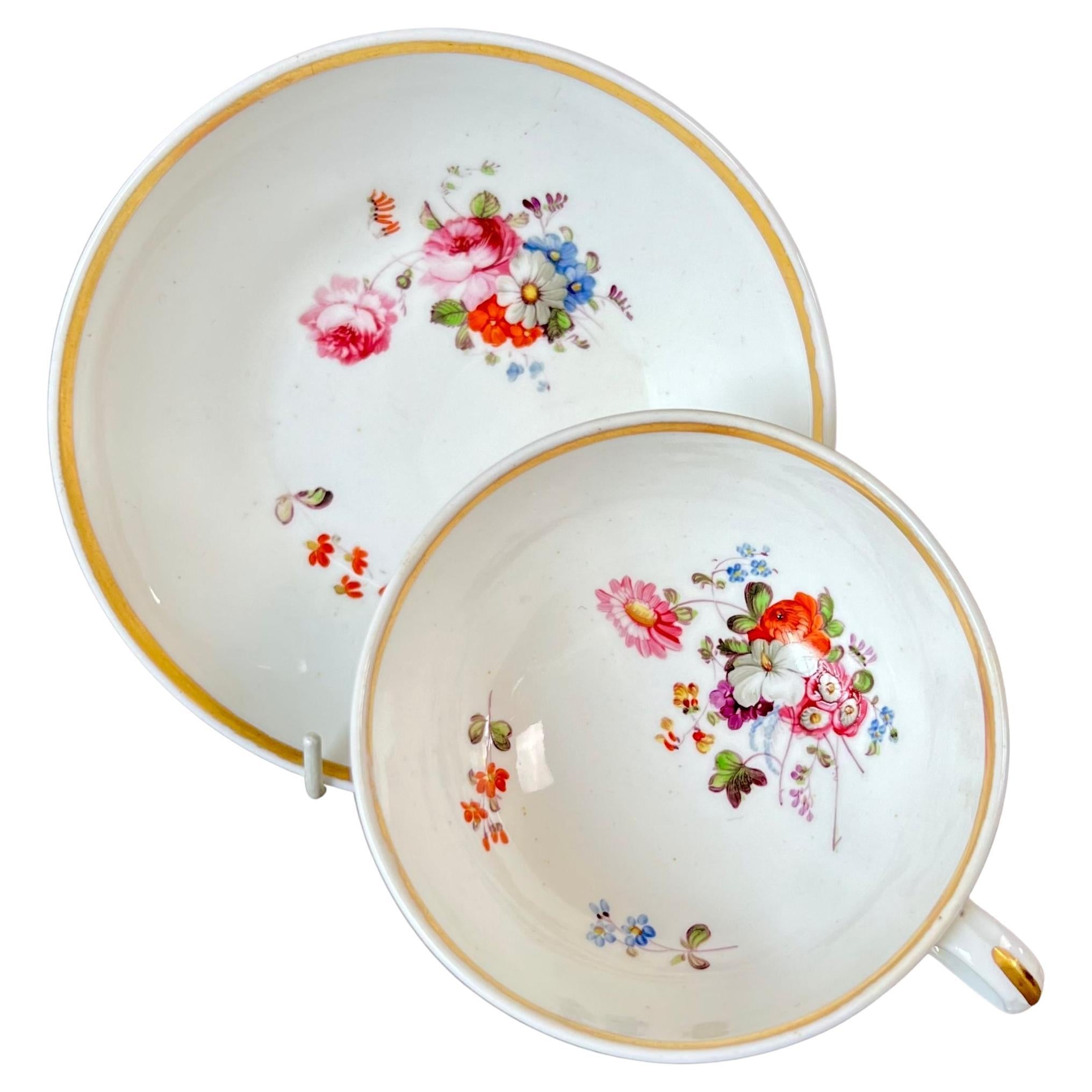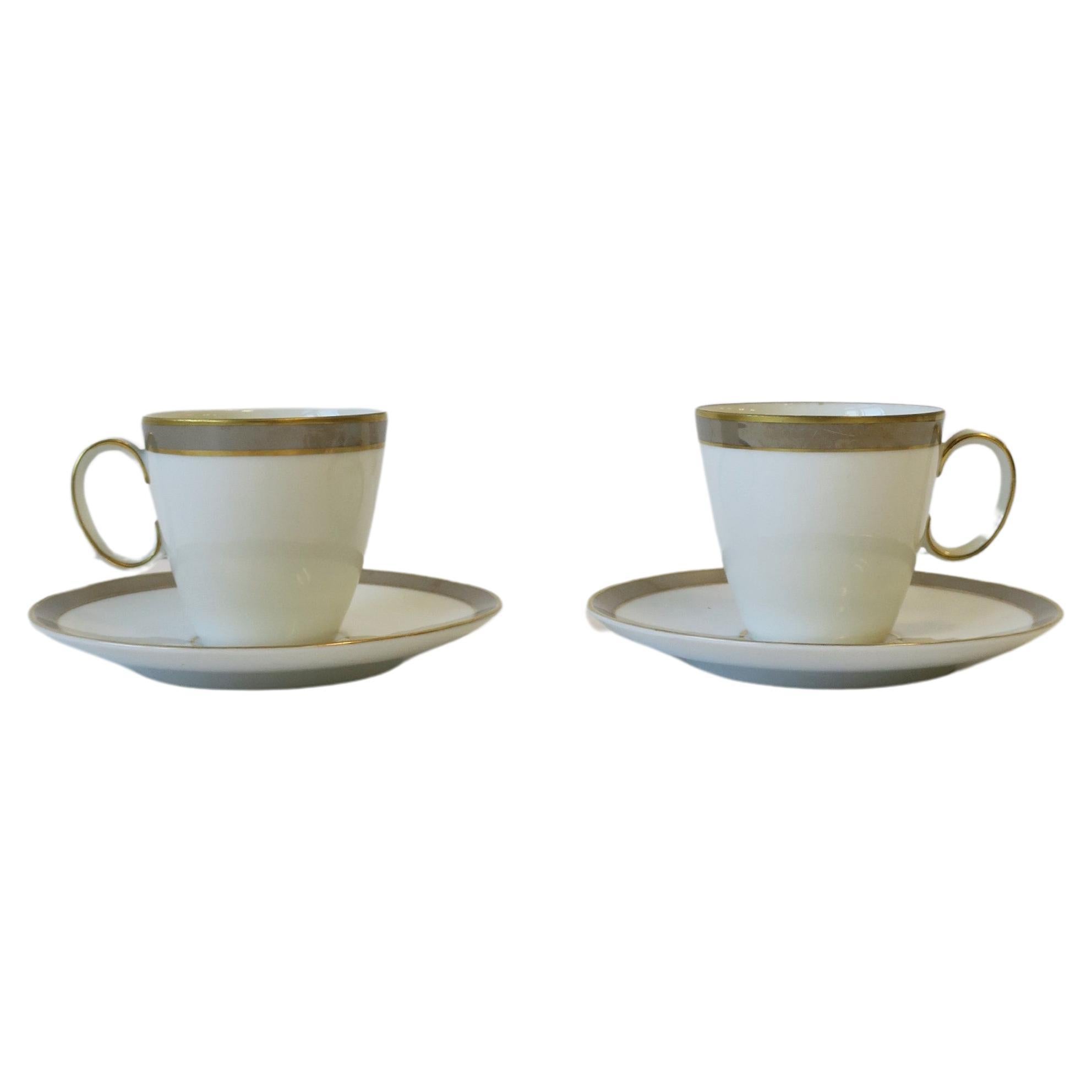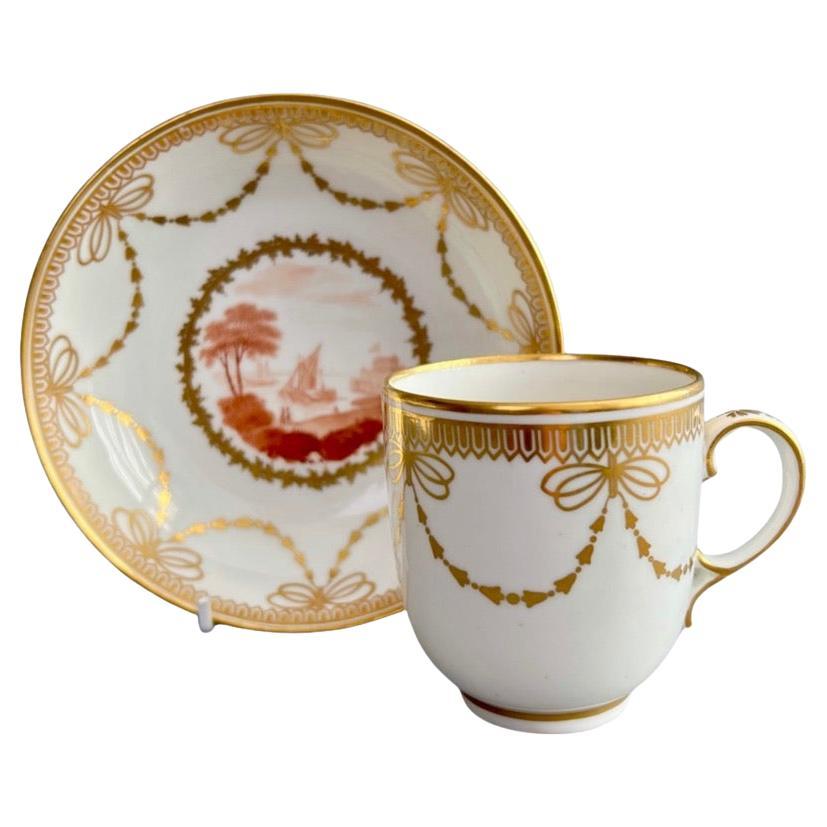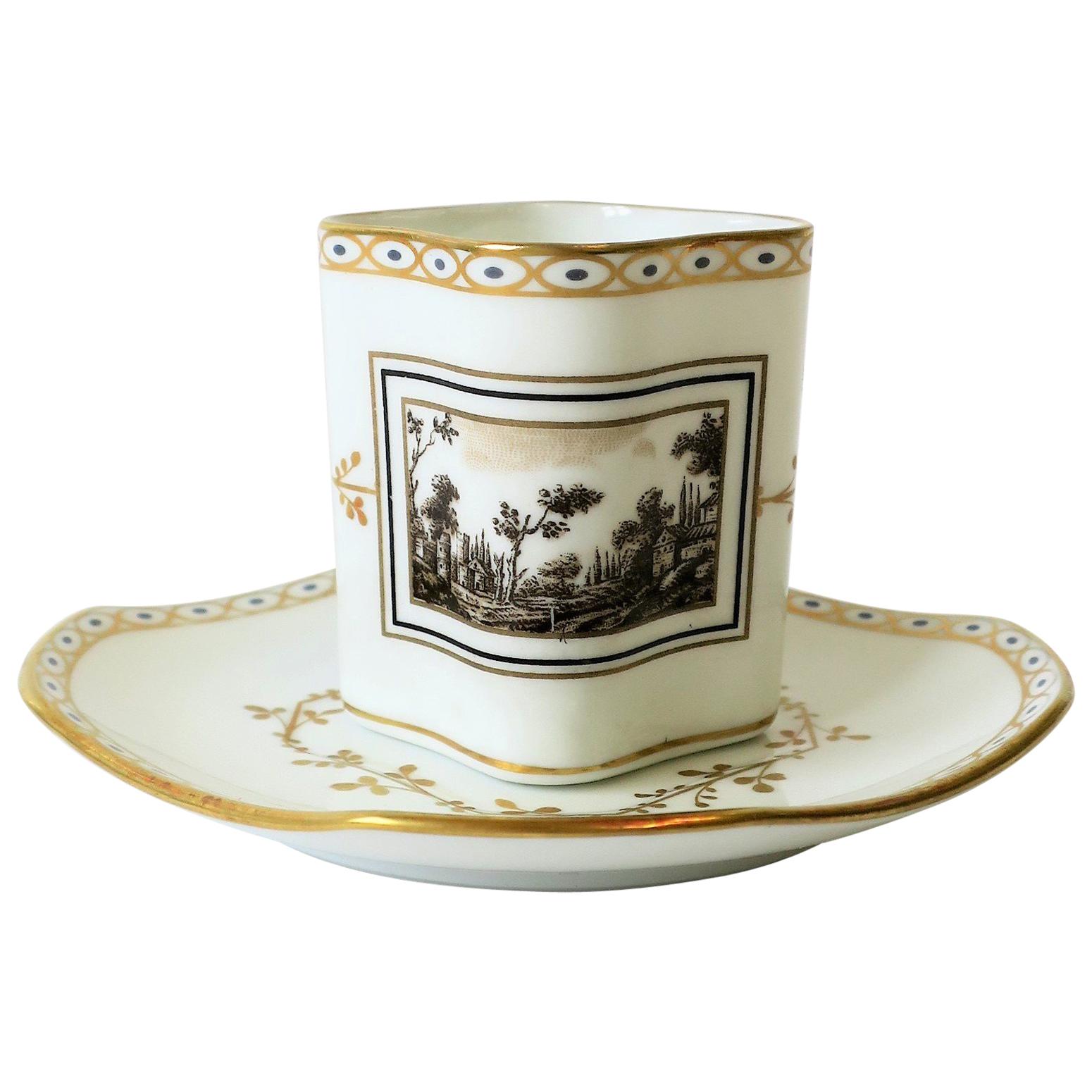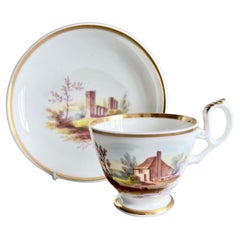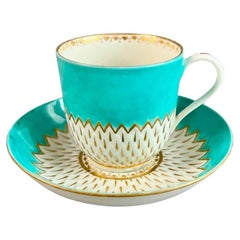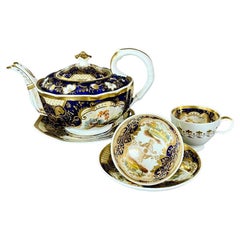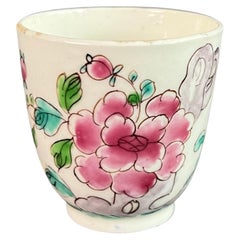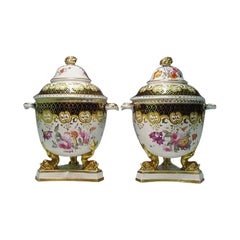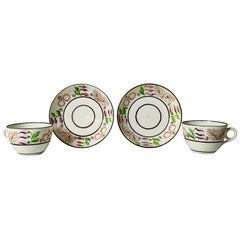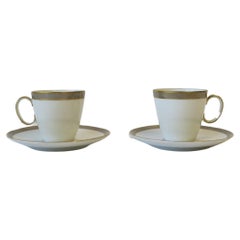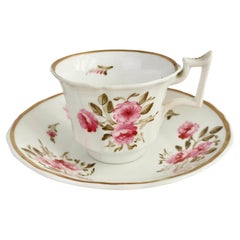
Ridgway Porcelain Coffee Cup, Pink Roses on White, Regency ca 1825
View Similar Items
Want more images or videos?
Request additional images or videos from the seller
1 of 15
Ridgway Porcelain Coffee Cup, Pink Roses on White, Regency ca 1825
About the Item
- Creator:Ridgway Porcelain (Maker)
- Dimensions:Height: 1 in (2.54 cm)Width: 1 in (2.54 cm)Depth: 1 in (2.54 cm)
- Sold As:Set of 2
- Style:Regency (Of the Period)
- Materials and Techniques:
- Place of Origin:
- Period:
- Date of Manufacture:circa 1825
- Condition:Wear consistent with age and use. In excellent antique condition, some crazing on the cup.
- Seller Location:London, GB
- Reference Number:Seller: A-RID831stDibs: LU4805127234202
About the Seller
5.0
Gold Seller
Premium sellers maintaining a 4.3+ rating and 24-hour response times
Established in 2016
1stDibs seller since 2019
225 sales on 1stDibs
Typical response time: 2 hours
Authenticity Guarantee
In the unlikely event there’s an issue with an item’s authenticity, contact us within 1 year for a full refund. DetailsMoney-Back Guarantee
If your item is not as described, is damaged in transit, or does not arrive, contact us within 7 days for a full refund. Details24-Hour Cancellation
You have a 24-hour grace period in which to reconsider your purchase, with no questions asked.Vetted Professional Sellers
Our world-class sellers must adhere to strict standards for service and quality, maintaining the integrity of our listings.Price-Match Guarantee
If you find that a seller listed the same item for a lower price elsewhere, we’ll match it.Trusted Global Delivery
Our best-in-class carrier network provides specialized shipping options worldwide, including custom delivery.More From This Seller
View AllH&R Daniel Coffee Cup Duo, Plain Shape, White with Landscape, 1825-1830
By H&R Daniel
Located in London, GB
This is an extremely rare and beautiful coffee cup and saucer made by H&R Daniel some time between 1825 and 1830. The set is potted in the "plain" shape and bears pattern no. 4652 wi...
Category
Antique 1820s English Rococo Revival Tea Sets
Materials
Porcelain
Derby Porcelain Coffee Cup, Artichoke Pattern in Turquoise, Georgian ca 1785
By Derby
Located in London, GB
This is a beautiful coffee cup and saucer made by Derby in about 1785. The set has the distinctive "artichoke" moulding and a bright turquoise ground with the white artichoke surface...
Category
Antique 1780s English George III Tea Sets
Materials
Porcelain
Samuel Alcock Porcelain Solitaire Tea Set, Cobalt Blue, Gilt, Landscapes, ca1825
By Samuel Alcock & Co.
Located in London, GB
A solitaire tea set consisting of a teapot with cover on a stand and a trio consisting of a teacup, a coffee cup and a saucer, in “half orange” shape with deep cobalt blue and yellow...
Category
Antique 1820s English Regency Tea Sets
Materials
Porcelain
$1,265 / set
Free Shipping
Bow Porcelain Orphaned Coffee Cup, Famille Rose Peony, circa 1755
By Bow Porcelain
Located in London, GB
This is a very charming orphaned coffee cup made by the Bow Porcelain factory in about 1755. The cup is decorated in a Chinese "famille rose" peony pattern. This cup would have been part of a large tea service, and the tiny size shows how expensive coffee was in the 18th Century.
The Bow Porcelain Factory was one of the first potteries in Britain to make soft paste porcelain, and most probably the very first to use bone ash, which later got perfected by Josiah Spode to what is now the universally used "bone china". Bow was the main competitor of the Chelsea Porcelain Factory, but where Chelsea made very fine slipcast porcelain, Bow made a different soft paste porcelain that tended to be softer and could be pressed into moulds. Bow served a larger public generally at lower prices. The factory was only in operation between 1743 and 1774, after which the tradition got incorporated into some of the later famous potteries such as Worcester and Derby.
The cup is unmarked, which is normal for Bow items of this era.
Condition report the cup is in excellent condition without any damage or repairs. There are various glazing imperfections, which are quite normal for porcelain of this era.
Antique British porcelain...
Category
Antique 1750s English Rococo Tea Sets
Materials
Porcelain
Spode Porcelain Teacup Trio, Red Imari Dollar Pattern, Regency, ca 1810
By Spode
Located in London, GB
This is a beautiful orphaned teacup made by Spode in about 1810. It bears a lavish Japanese-inspired Imari pattern.
Spode was the great pioneer among the Georgian potters in England. Around the year 1800 he perfected the bone china recipe that has been used by British potters ever since, and he was also the leading potter behind the technique of transferware, making it possible for English potters to replace the Chinese export china, which had come to an end around that time, with their own designs. This was fundamental to a thriving industry that would last for about 150 years and provide half the world with their tableware. Spode porcelain is regarded as one of the highest quality porcelains around; for a soft-paste porcelain it is surprisingly hard and fine, and has a wonderful bright white colour.
The pattern on this can is called "Dollar" pattern, a very famous pattern that was used by English potters in the 18th and early 19th Century. It is obvious why it is called “dollar” - but its origin is less obvious! It is thought that this pattern was derived from a very old Chinese pattern depicting a tree with elaborate foliage that hides a Chinese character representing longevity or happiness. Traditionally, this went with a an image called “Taotie”, which was used on very ancient bronze vases...
Category
Antique Early 1800s English Regency Porcelain
Materials
Porcelain
Samuel Alcock Porcelain Teacup, White with Flower Sprays, ca 1823
By Samuel Alcock & Co.
Located in London, GB
A teacup and saucer in the “half orange” shape, white with simple gilt rim and beautiful hand painted flower sprays
Pattern unknown but similar to 1082
Year: ca 1823
Size: cup diameter 10cm (4”), saucer diameter 14.2cm (5.5”)
Condition: excellent, some rubbing to gilt
There are several items available in this design, please see group image and ask for more info if interested.
The Samuel Alcock factory was operative in Staffordshire between 1822 and 1856, after which it was bought by Sir James Duke and Nephews. The factory started as a partnership between the young Samuel Alcock and the older Ralph Stevenson, who provided the factory and capital. Alcock quickly took the factory to great heights, building one of the biggest factories of its time. Alcock jumped on the new Rococo Revival fashion and served a huge new middle class market. The reason we now don't hear much about Samuel Alcock porcelain...
Category
Antique 1820s English Regency Tea Sets
Materials
Porcelain
You May Also Like
Georgian John Ridgway PAIR Porcelain Plates Hand Painted Pattern 1054, Ca 1825
By Ridgway Porcelain
Located in Lincoln, Lincolnshire
This is a beautiful pair of very decorative, Porcelain hand painted Desert Plates by John Ridgway, of Shelton, Hanley, Staffordshire Potteries, England, dating to the George 1Vth / W...
Category
Antique Early 19th Century English Regency Ceramics
Materials
Porcelain
Regency Regency Ridgway Porcelain Fruit Coolers, Covers and Liners
By Ridgway Porcelain
Located in Downingtown, PA
The Regency Ridgway porcelain coolers are decorated in pattern #1173. They have a circular body raised on three dolphin feet and trefoil base and painted ...
Category
Antique Early 19th Century English Regency Serving Pieces
Materials
Porcelain
Collection of Mario Buatta a Pair of Porcelain Cups Made in England, circa 1825
By Staffordshire
Located in Katonah, NY
Provenance: The Private Collection of Mario Buatta a pair of porcelain teacups made in England, circa 1825.
This lovely pair of Staffordshire teacups...
Category
Antique Early 19th Century English Country Tea Sets
Materials
Porcelain
Ray Loewy White Grey Gold Porcelain Espresso Coffee Cup & Saucer, Set of 2
By Raymond Loewy
Located in New York, NY
A set of two (2) white, grey, and gold porcelain espresso coffee or tea demitasse cup and saucer by designer Raymond Loewy. Cup and saucer are white porcelain with grey and gold deta...
Category
Mid-20th Century German Mid-Century Modern Tea Sets
Materials
Porcelain
Richard Ginori Italian Porcelain Espresso Coffee Tea Cup Saucer
By Richard Ginori
Located in New York, NY
A beautiful vintage Italian porcelain espresso coffee or tea demitasse cup and saucer 'Toscana' by designer Richard Ginori, circa mid-20th century, ...
Category
Mid-20th Century Italian Country Porcelain
Materials
Ceramic, Porcelain
Tulip Coffee Cup in Gilded Paris Porcelain by Flamen-Fleury
By Old Paris
Located in Paris, FR
Tulip-shaped cup with its saucer in Old Paris Porcelain. Hand-painted pieces with lovely purple and white shades, in the shape of a tulip flower. Very delicate piece with a butterfly...
Category
Antique Early 19th Century French Restauration Porcelain
Materials
Porcelain
